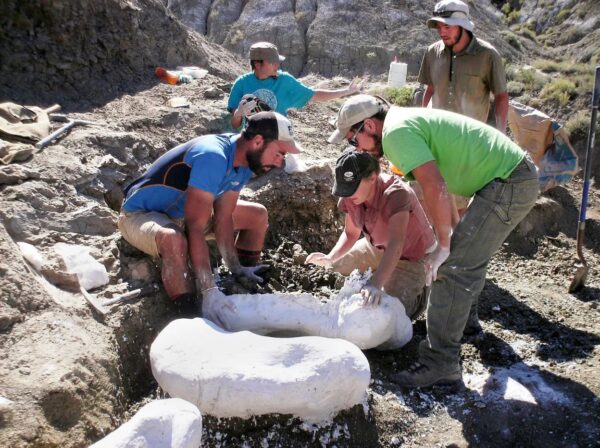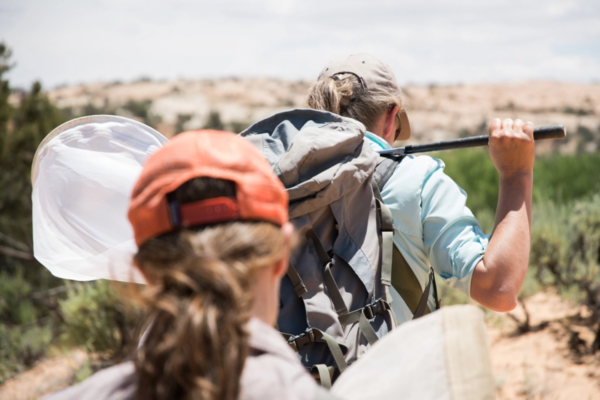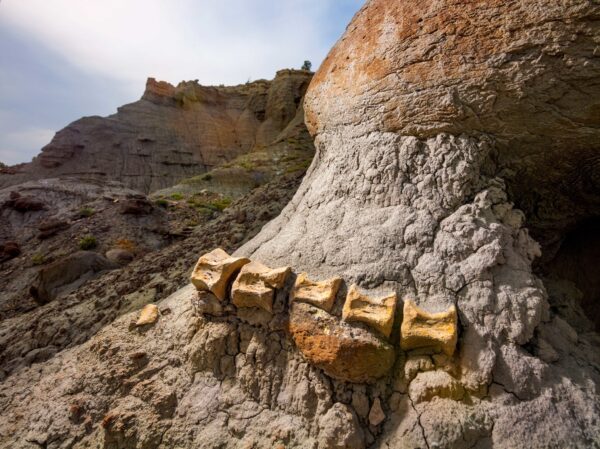In a rush to establish a new resource management plan for Grand Staircase-Escalante National Monument, the Bureau of Land Management is considering turning over the monument’s science plan to be done by environmental non-profit group Grand Staircase Escalante Partners, according to sources.
Since the RMP process began last year, the BLM, local cooperating governmental agencies, and members of the Monument Advisory Committee, or MAC, have been exploring a range of plan alternatives that adhere to President Biden’s 2021 proclamation to restore the monument to its original size.
But there is one major hangup: as the monument enters its 27th year, a mandated “science plan” for the Grand Staircase Monument has never been completed. Now there’s hardly enough time for the BLM to complete the science plan under the federal guidelines established for National Landscape Conservation System lands, let alone complete the entire RMP.
The BLM’s deadline for the management plan’s completion is March 1, 2024.
MAC committee members who asked not to be named, told The Byway they were concerned that turning over the science plan to be performed by a special interest group would only yield conclusions designed to conform to that group’s goal for the monument — namely, to restrict access.
One of the committee members spoke with Harry Barber, a BLM manager at the Kanab Field Office in January, hoping to have more of a discussion on the science plan in a future meeting. “Harry told me they were suggesting that a third party would be given that responsibility,” the committee member said, adding, “I objected to that.”
Since then it has become more clear that the non-governmental agency that Barber was referring to is Grand Staircase Escalante Partners.
According to another committee member, the sense among some MAC members is that the BLM or Department of the Interior have already made a decision as to how the monument will be managed and that the MAC was only organized to “check a box.” There is also a general distrust of Partners, with some comments in public MAC meetings suggesting that Partners is really the organization calling the shots, not the BLM.
Other than what offhand remarks might indicate, the actual relationship between Partners and the BLM remains unclear.
Beyond the question of whether BLM would actually turn over the science plan to be drawn up by Grand Staircase Escalante Partners, the next question is what exactly Partners’ goals would be in drafting the science plan.
Partners has, for years, thought of themselves as the foremost support group for Grand Staircase-Escalante National Monument, with the mission of promoting the science, conservation, and education for the monument. They have been vocally opposed to grazing and extraction but have generally been friendly to recreation.
In recent meetings, however, Partners staff have on occasion said the quiet parts out loud, suggesting they are not in favor of recreation either, or any other use.
The Monument Advisory Committee, with 15 seats total, is composed of a variety of representatives from the community, local governments, tribes, scientists and other interested parties, to advise the BLM on how to manage the monument. Of the 13 committee members last year, two are representatives from Partners: Executive Director Sarah Bauman, and President Scott Berry.
In a July 22 MAC meeting, Scott Berry questioned why the BLM would be focused on developing infrastructure to support growing visitation on the monument. “I guess, just would wonder if you are going to be able to include in your future planning, ways to reduce visitation,” he said. “If we made it harder for people to visit the monument, that would serve the goal of protecting and conserving objects and values.”
Jabe Beal, the monument’s outdoor recreation planner, answered Berry saying the BLM had discussed permits and allocations of use as a way to “manage” visitation. “Can we just say you can’t come? I’m not sure that’s in the BLM’s capacity, but we can take actions to minimize impacts by using certain areas for certain activities,” Beal said.
Other committee members pushed back, saying they were not in favor of reducing visitation or restricting access. One committee member later said that both Bauman and Berry had “blurted out” such comments multiple times in the early meetings, but had been more careful recently. “They are a little more astute now, but at first they spoke their minds until we called them out on it,” the member said, adding that the Partner’s end goal is to lock up the monument and preserve it like a wilderness.
Prior to being considered for the job of writing the Grand Staircase Monument’s science plan, Partners’ two committee members have been laser-focused on establishing “science” as the chief consideration for monument decision making, disregarding other considerations laid out in Biden’s proclamation, such as heritage and recreation.
Berry pressed BLM Paleontologist Dr. Alan Titus on the science question last July, asking whether he thought science should be used to shape programs designed to protect Monument objects “given the science purpose behind the monument.”
But Dr. Titus answered there were other considerations besides science in making decisions on “whether or not to force people to carry wag bags,” as an example. “These are management questions based on human values,” he said. “Science can certainly inform, but ultimately, those decisions regarding resource management will be based on human values and not science.”
Still, Berry strongly advocated for science to be used “starting at the very top” of the planning process.
Committee members are concerned at the erasure of other considerations in management decisions, however. In their view, Partners’ insistence that science be the exclusive consideration, coupled with their being granted the task of writing the science plan, is a recipe for disaster. If it is true that Partners wants to keep people off the Monument, they would have the power to cherry-pick scientific evidence to justify any management plan they want — whether to cut grazing to prevent erosion, or to cut recreation to protect cryptobiotic soil crusts.
Those who disagree would be without financial resources to dispute Partners’ research conclusions if there were an error. One member complained that participants from Partners are paid by their organization to work on this while all the other participants are unpaid volunteers.
Soon the composition of the Monument Advisory Committee will be changing. Last summer the advisory committee elected pro-access, pro-grazing Escalante local Dr. Bill Weppner to chair the committee in a 7-6 vote. Dr. Weppner, a credentialed scientist, has advocated for science education through monument access since the monument’s inception.
Some members opposed to Weppner’s nomination seemed blindsided by the imbalance of committee control. Since that time, the MAC’s charter has been revised by an unknown author, thought by some committee members to be someone at the DOI or an unnamed NGO. The BLM declined to state who drafted the new charter.
The new charter calls for six of the committee’s 15 seats to be occupied by special governmental employees, such as scientists. Local representatives believe this is an attempt to tilt the committee’s balance by packing it with non-local members aligned with Partners’ limited-access ideology, such as experts from environmental groups or academia. The changes are expected to take effect in June.
– by AJ Martel


Feature image caption: A segment of a duck-billed dinosaur tail is exposed in the Kaiparowits Plateau region of Grand Staircase-Escalante National Monument. The area has produced 21 new species of dinosaurs in an expansive Cretaceous deposit dating between 75 and 77 million years old. Courtesy of Cory Richards/National Geographic.
AJ Martel – Escalante
AJ Martel is the youth coordinator at The Byway, but he is involved in most everything. He and his family live in Escalante, and they love it here! AJ has found Utah’s small towns quite inviting and under-defended, which is why he’s so involved with the paper. What AJ loves to do most, though, is serve his community. That is clear through everything he writes and does for Escalante, Utah.

